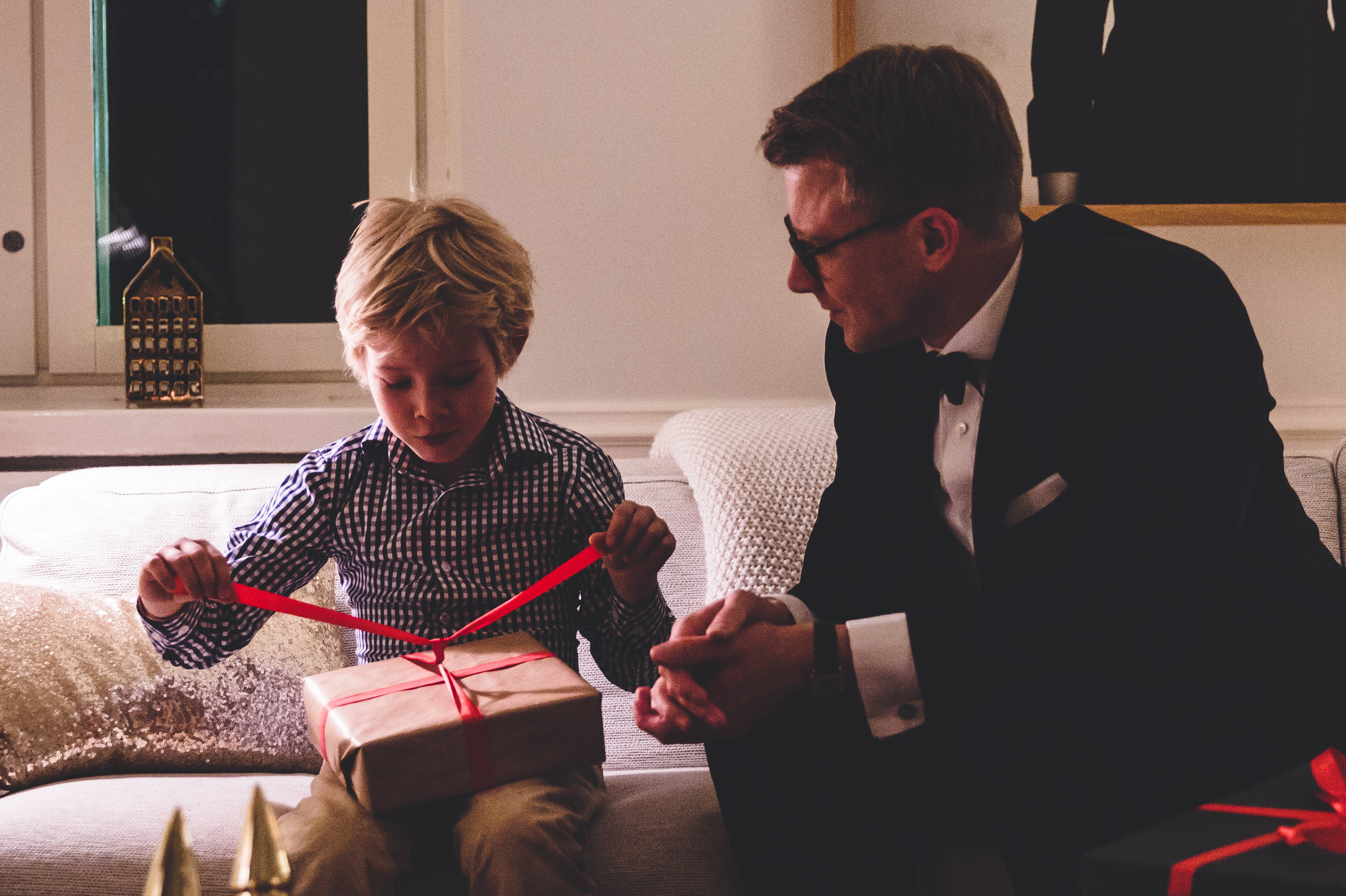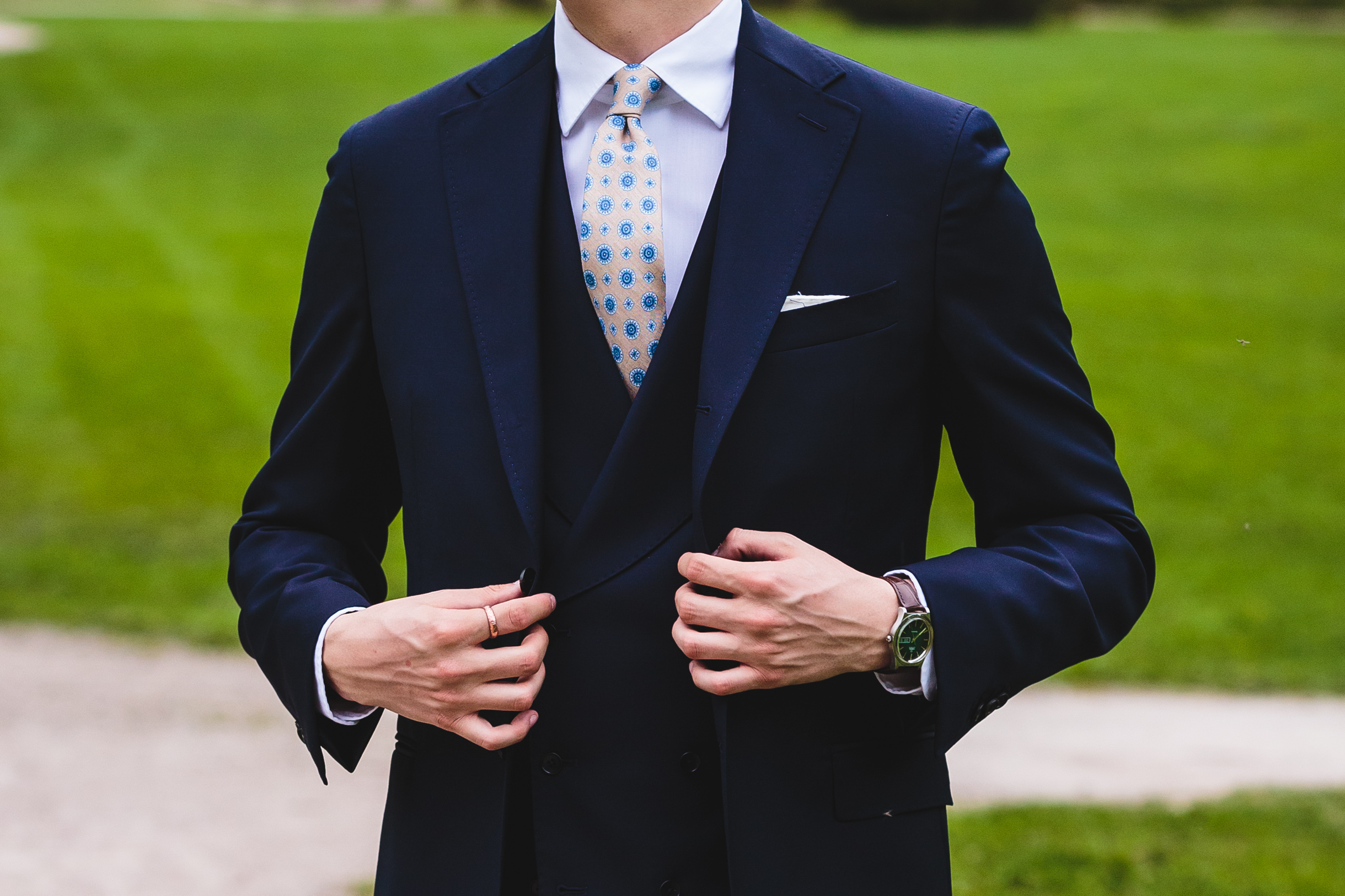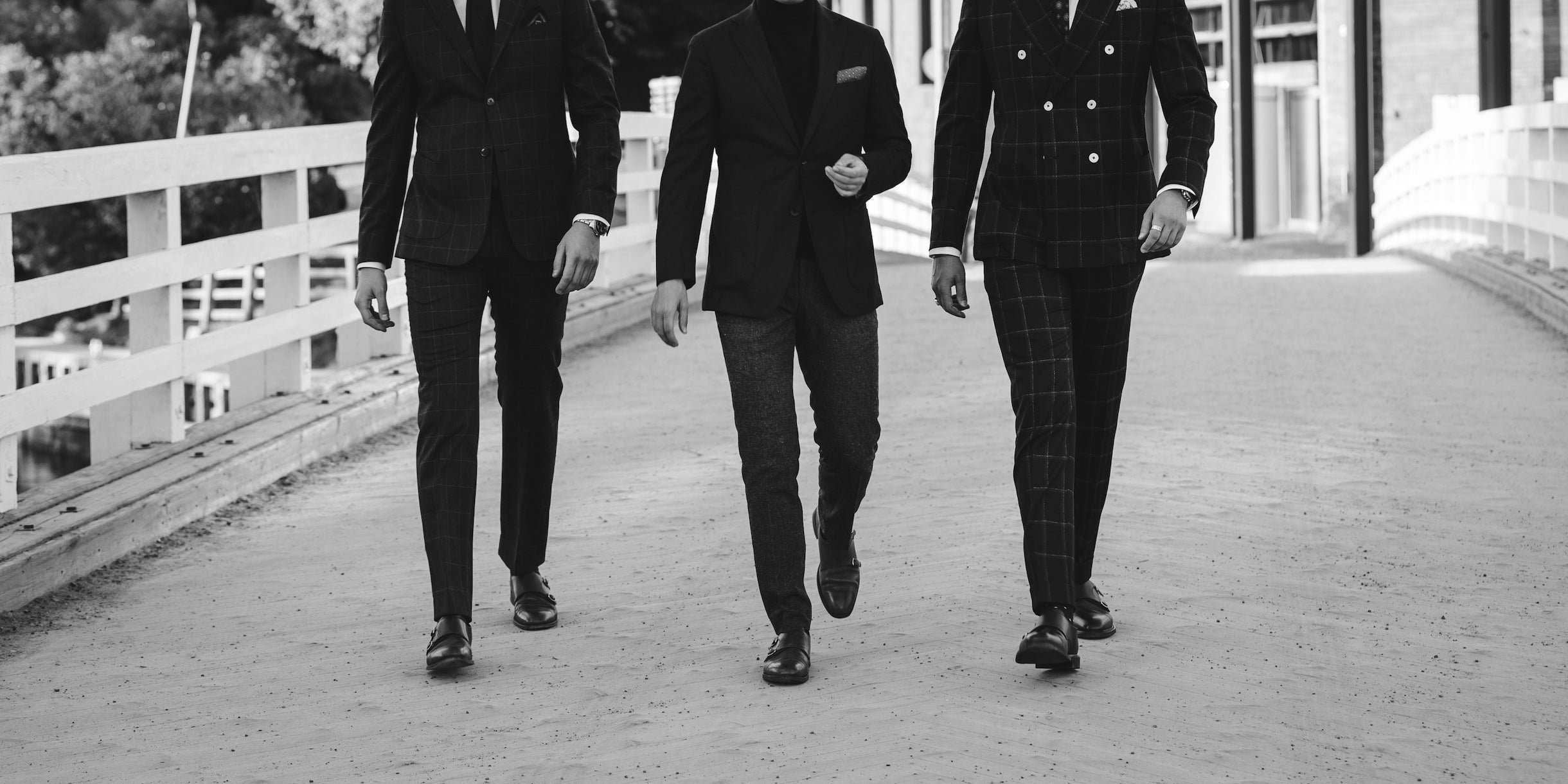
Tuxedo Guide: How to dress for Black Tie occasions
Compared to the most formal evening attire, the “dark suit” and the “white tie”, the tuxedo (or “black tie”) has solidified its position as a slightly more casual alternative when it comes to evening wear. A tuxedo is typically black or dark blue, the fabric is plain or has a subtle pattern. The lapels, and the buttons, are covered with black or dark blue silk and the lapels are either of the “shawl” or “peak” style.
Jacket
The tuxedo jacket is usually one-buttoned, but a two-buttoned version is also an elegant choice. The pockets are always of the “jetted” style. A tuxedo can also be a “three piece”, with a vest of the same colour as the jacket and the trousers. A tuxedo is typically made of cotton or a cotton-mohair blend, but also cotton-silk and linen could be good alternatives, especially for warmer climates.

Shirt
A tuxedo shirt is traditionally white or cream coloured, and always equipped with a french cuff. The fabric is usually plain or it might have a subtle woven texture. The collar is mostly of the “cutaway” or “windsor” style, but a “wing tip” collar, usually used with a white tie, is also acceptable according to etiquette. It’s worth noting though that the wing tip might be perceived as a bit old fashioned. But we’ll leave that decision to you.
The tuxedo shirt front can either have vertical pleats or be plain, have a plain hidden button front or visible removable buttons. For summer, a linen or a light cotton-silk blend fabric could be a good choice for your tuxedo shirt.
Bow tie
A tuxedo is worn with a black or a dark blue bow tie. The bow tie is usually made of silk with plain or slightly woven texture. A bow tie made of velvet is also an elegant option.
Pocket square
When it comes to pocket squares, a white, silk, linen or cotton pocket square are all good options. If you choose a cotton or linen pocket square go with a “James Bondesque” square fold, while the silk alternative requires a more liberal fold to accommodate the softer fabric. The tuxedo etiquette allows you to play around with the colour of the pocket square, as long as the pattern is plain or has a very subtle pattern.
Cummerbund
A cummerbund, which is sort of a “belt” made of black or dark blue silk, is a usually worn with the tuxedo. The cummerbund should cover the waistband of your tuxedo trousers and the folds of the cummerbund should point upwards. The outer hem of tuxedo trousers is covered with the same coloured silk as the lapels. The trousers typically don’t have turn-ups.
Shoes
The shoes worn with a tuxedo are either patent leather or calf leather shoes. A plain, Oxford style shoe is the most traditional alternative. For the more eccentric taste, so called “opera pumps” in patent leather, is a sure way to stand out from other guests. Choose socks that are of the same shade as your tuxedo.

Casual alternatives to the tuxedo
When writing about the tuxedo it’s also relevant to mention different “James Bond” style dinner jacket combinations, that are a bit more casual compared to the traditional tuxedo. For example, the white or cream coloured jacket, suitable for tropical / hot climates or the burgundy and forest green jackets made of velvet and perfect for fall weather. As these jackets are more casual to their character, the patterns and colours tend to represent the wearers personality more than any given etiquette.
However, the shirt should still resemble a traditional tuxedo shirt in style and the trousers should be black, dark blue or in some cases charcoal. You can combine a dinner jacket with elegant velvet pumps instead of the traditional tuxedo shoe alternatives if you feel like it.
During the past years less traditional tuxedos, such as dark greens, brighter and lighter shades of blue as well as grey and the most challenging; beige, have started to show up. Although many are well designed and elegant we still recommend to sticking to etiquette regarding the attire as a whole.
With stylish regards,
Anton

